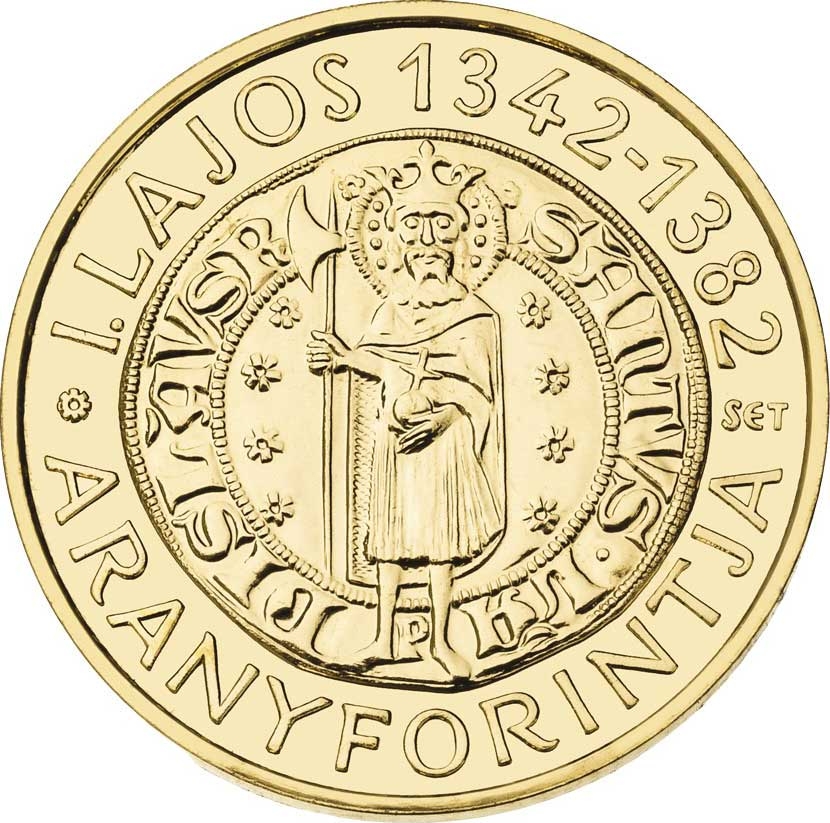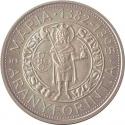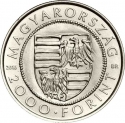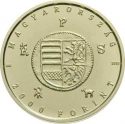You are about to finish your registration. Please check your mailbox (including spam folder). There should be a letter with a confirmation link. Check setting to make sure that your e-mail address is correct.
Send letter againDescription
A piedfort is an unusually thick coin, often exactly twice the normal weight and thickness of other coins of the same diameter and pattern. Piedforts are not normally circulated, and are only struck for presentation purposes by mint officials (such as patterns), or for collectors, dignitaries, and other VIPs.
The Hungarian National Bank issues a gold commemorative coin "Gold Florin of Louis I" as the second piece in the series of Medieval Hungarian gold forints.
Louis I (1326–1382), known as Louis the Great, reigned as King of Hungary and Croatia from 1342 and later became King of Poland from 1370. He inherited a centralized kingdom and a considerable treasury from his father, Charles I of Hungary. Despite being deeply influenced by his devout mother, Elizabeth of Poland, Louis embarked on campaigns to expand his territories, including crusades against the Lithuanians and restoring royal authority in Croatia. He accused his sister-in-law, Queen Joanna I of Naples, of assassinating his brother and launched unsuccessful campaigns against her, adopting the title of King of Sicily and Jerusalem but failing to gain recognition from the Holy See.
Louis ruled Hungary with absolute power but also confirmed the liberties of the nobility in 1351, introducing reforms such as an entail system and rent uniformity for peasants. He waged wars against neighboring states, expanding Hungarian influence in the Balkans and forcing concessions from the Republic of Venice. Despite his efforts to convert pagan or Orthodox subjects to Catholicism, his rule faced opposition in these regions. Louis inherited the Polish throne in 1370 and sought to secure succession rights for his daughters through the Privilege of Koszyce in 1374. Despite these efforts, his rule remained unpopular in Poland. In his final years, suffering from a skin disease, Louis became increasingly religious and supported Urban VI during the Western Schism. He is remembered in Hungarian historiography as one of the most powerful monarchs, overseeing a realm extending to three seas.
Engraver: Tamás E. Soltra
Obverse

|
Depicts the reverse of Louis I the Great's Gold Florin, showcasing Ladislaus I (Saint Ladislas) holding his battle-axe and orb with a halo above his crowned head with the Latin inscription "Sanctus Ladislaus Rex" (Saint Ladislaus the King), surrounded by the name of the king and the dates of his reign above, the inscription "GOLD FLORIN" below, separated on the right by the engraver's initials and on the left by a dot. I.LAJOS 1342-1382 |
|---|---|
Reverse

|
Depicts a shield surrounded by a decorative Gothic frame, adorned with decorative motifs of the Anjou lily in the corners and upper corner. Below the shield, in horizontal rows, the denomination, the word "FORINT," and the mintmark "BP." are displayed. Encircling the edge, a circular inscription reads "HUNGARY," with the year "2013" separated by dots on each side. MAGYARORSZÁG |
| Edge |
Louis by the grace of God King of Hungary +LODOVICI • DEI • GRATIA • REGIS • UNGARIAE |
50 000 Forint
Piedfort
Gold Florins of Medieval Hungary
Gold Florin of Louis I the Great
Subscribe series
Adamo# EM260
Gold Florins of Medieval Hungary
Gold Florin of Louis I the Great
Related coins
Gold Florins of Medieval Hungary
Gold Florins of Medieval Hungary







